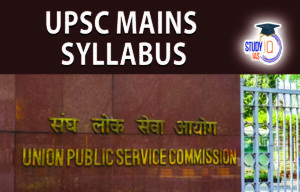Q14. What are the direct and indirect subsidies provided to farm sector in India? Discuss the issues raised by the World Trade Organization (WTO) in relation to agricultural subsidies. (15m) – Agriculture
Introduction
Agriculture sector’s share in GDP is 17% and it employs nearly 50% of the population. However, there are challenges in the Indian agriculture sector, including uncertain monsoon patterns, small and divided land holdings, limited investment and relatively low growth in output (only a 3% growth in 2022-23 as per Economic Survey 2022-23). To help the sector, the government provides subsidies and support.
Body
Direct subsidies
- Input Subsidies: The government provides subsidies on various inputs, including fertilizers, seeds, pesticides, and irrigation.
- Minimum Support Price (MSP): The MSP is a price floor set by the government to ensure farmers receive a minimum price for their crops.
- Direct Income Support: Government provides assured annual income to farmers.
Ex. PM Kisan Samman Nidhi (PM-KISAN): This scheme provides an income support of ₹6,000 per year to each eligible farmer family, KALIA Scheme (Odisha), Rythu Bandhu (Telangana)
- Export Promotion Schemes: APEDA provides logistics and non-tariff facilities which help in promotion of export of agricultural products.
Indirect Subsidies:
- Infrastructure Development: Development of rural infrastructure, such as roads and storage facilities, indirectly supports the farm sector by reducing post-harvest losses and improving market access.
- The Pradhan Mantri Fasal Bima Yojana (PMFBY) : It is a crop insurance scheme that provides financial protection to farmers in case of crop failure due to natural calamities.
- Electricity Subsidy: Agriculture is a major consumer of electricity and farmers often receive subsidised electricity.
- Credit subsidy: The government provides a subsidy on agricultural loans, which reduces the cost of borrowing for farmers.
- Research and Extension Services: High Yielding Varieties (HYV), Investment in agricultural research and extension services indirectly benefits farmers by improving crop yields and farm practices.
However, international trade regulatory authority World Trade Organisation (WTO) has raised some issues on India’s agricultural subsidies because of following reasons:
Issues raised by the World Trade Organization (WTO) in relation to agricultural subsidies
- Trade Distortion and Unfair competition: The WTO raises concerns that India’s agricultural subsidies, particularly MSP and input subsidies, can distort international markets by encouraging underpricing of the Indian agricultural product in the International Market.
- The classification of subsidies: WTO Classifies subsidies into permitted and non-permitted. But there is no consensus on categorisation and definition of a particular subsidy.
- Impact on Global Trade: The WTO argues that excessive subsidies can lead to dumping of surplus produce in international markets, disrupting global trade and affecting the livelihoods of farmers in other countries.
- Non-Compliance with WTO Rules: The Agreement on Agriculture (AoA) of the WTO sets limits on the aggregate measurement of support (AMS) that a country can provide. India’s subsidies, particularly those related to MSP and procurement, have been criticised for exceeding the permissible levels.
Conclusion
Subsidising India’s agricultural sector is a pressing necessity. However, it is equally important to acknowledge and mitigate the trade distortions that may arise as a consequence. Furthermore, international bodies such as the WTO should take into account the developmental needs of emerging economies in tackling their unique challenges.
Check out the UPSC Mains GS Paper 3 2023 Analysis with detailed expatiation of the topics of Mains GS Paper 3 By the Study IQ Experts


 NCERT Books for UPSC Preparation, Check ...
NCERT Books for UPSC Preparation, Check ...
 UPSC Syllabus 2025, Check UPSC CSE Sylla...
UPSC Syllabus 2025, Check UPSC CSE Sylla...
 UPSC Mains Syllabus 2025, Optional Sylla...
UPSC Mains Syllabus 2025, Optional Sylla...





















